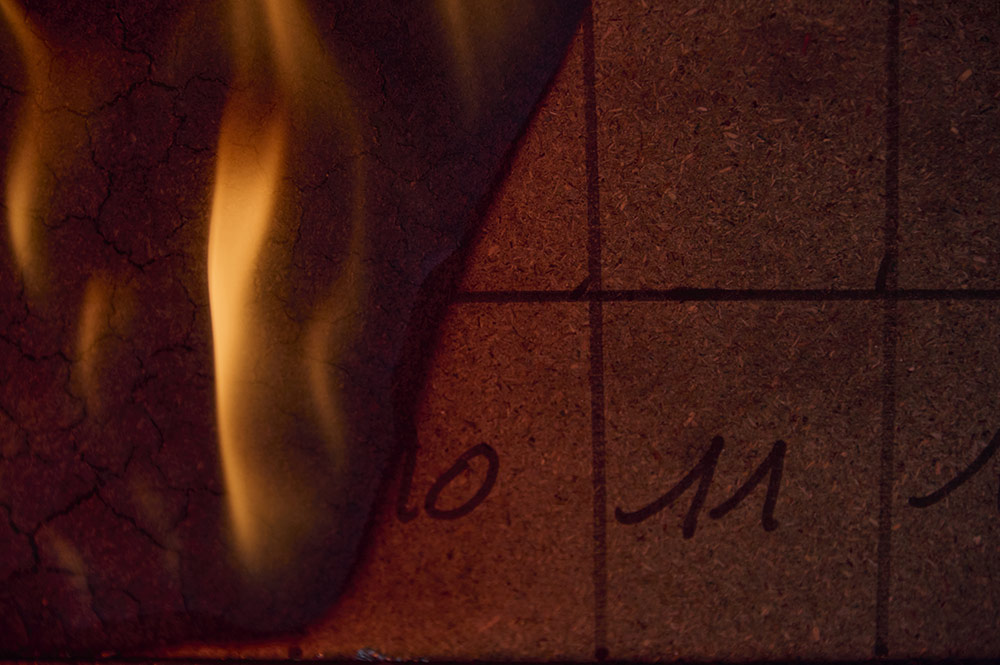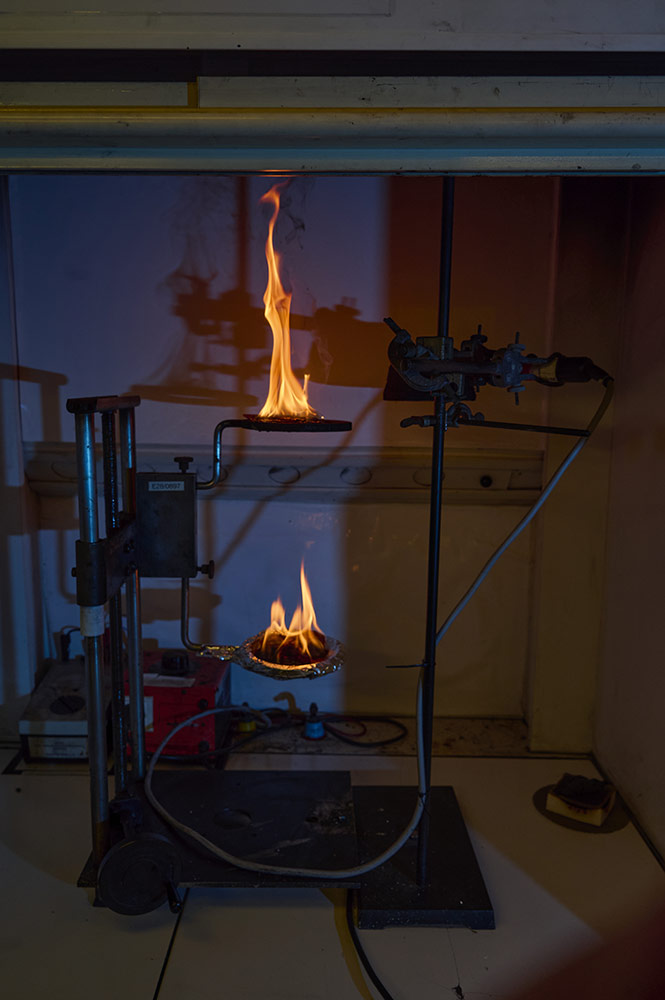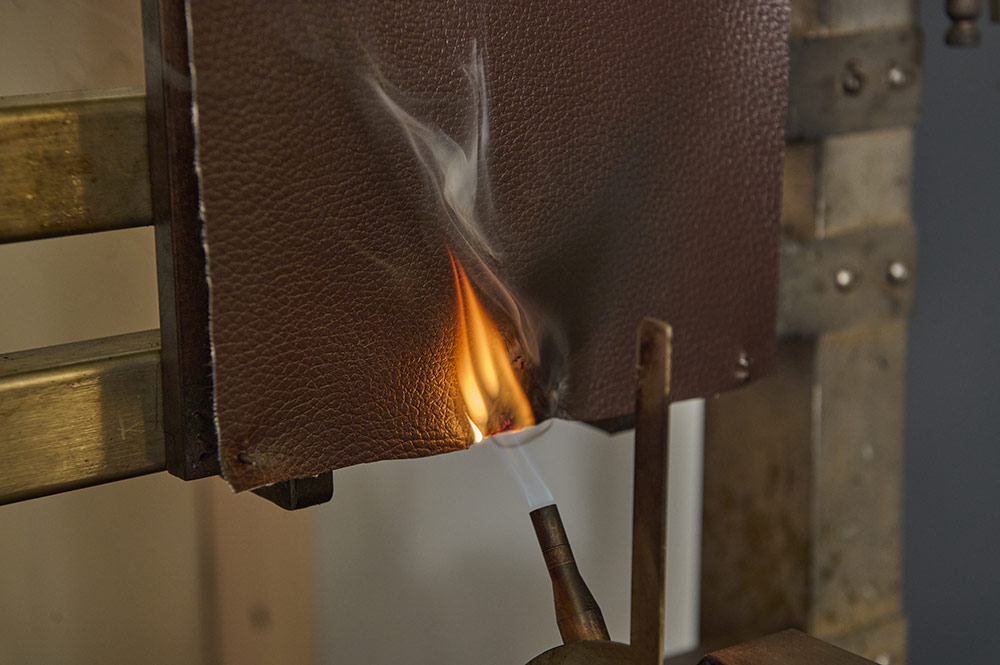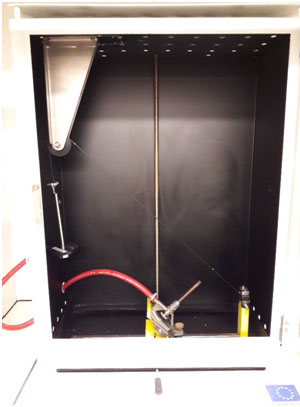Organisation of the fire tests according to R118 Regulation
The CEE-ONU R118 regulation concerns the burning behaviour and/or the capability to repel fuel or lubricant of materials used in the construction of M3 category vehicles classified II or III.
The regulation describes the types of approval applicable to the type of vehicles and to the components located in certain areas of the vehicles, in regards to their behaviour to fire and/or their capability of repelling fuel or lubricants.
Concerning the fire reaction of the different materials present in the vehicle, the R118 regulation describes five different tests :
ISO 5658-2 Vertical Radiant Panel: Lateral Flame Spread – Propagation test
The fire test specimens are held vertically and are exposed to a gas-fired radiant panel and a non-impinging pilot flame. The hot end of the specimen receives a radiant heat flux of 50.5 kW/m2 and this decreases to a level of 1.2 kW/m2 at the cooler end.


Although the pilot flame does not impinge on the surface of the specimen, it will act as an ignition source for any volatile gas produced by the product. During the course of the test, the maximum distance travelled by the flame along the specimen is recorded. The Critical Heat Flux at extinguishment (CHF) is determined through this test by measuring how far the flames travelled across the surface of the specimen.
Annexe 6: Determination of the horizontal burning rate of bus interiors
The sample is held horizontally in a combustion chamber in a U shaped support. The free end of the specimen is exposed to a flame for 15 s.

The time necessary for the flame to travel the distance between the first measuring point and the last one (or the measuring point at which the flame extinguished itself) is measured to calculate the horizontal burning rate of the material.
Annexe 7: Determination of the melting behaviour of fusible materials
The sample is placed 30 mm underneath a 500 W radiant heat source. Under the sample is a receptacle filled with cotton wool.

The aim of this test is to observe :
- If the specimen ignites
- If there are flaming or non-flaming falling droplets
- If the cotton wool ignites or not
Annexe 8: Determination of the vertical burning rate of materials

The rectangular sample is held vertically in a sample-holder, which allows placing 3 horizontal thread markers at 220 mm, 370 mm and 520 mm from the lower edge of the specimen.
A 20 mm flame, inclined at 30° from the vertical, is applied for 5s on the sample. During the test, the time necessary for the thread markers 1, 2 and 3 to break is measured starting from the moment the flame is applied.
Annex 10 -ISO 6722- : Assessment of flame propagation test for cables

A 950°C flame is applied perpendicularly to a cable sample inclined at 45°, and kept strait by applying mechanical stress, until the conductor appears, or during :
- 15 s for cables with conductor sizes smaller or equal to 2.5 mm²
- 30 s for cables with conductor sizes bigger than 2.5 mm²
This fire test is timed so to determine the time to the flame's extinction the burnt length of the cable is also measured at the end of the test.

